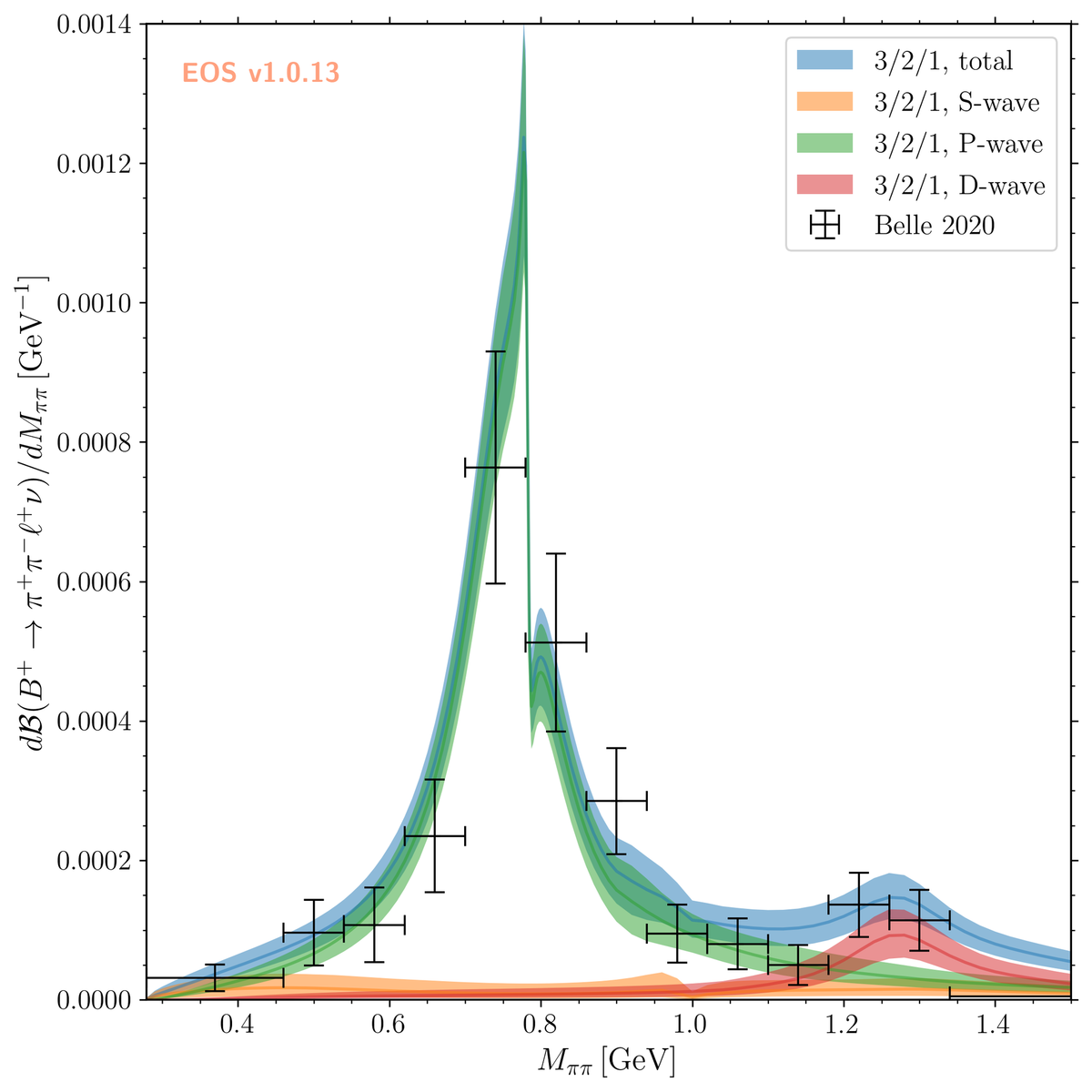Improved understanding of the di-pion system in semileptonic B decays
Hadrons that involve quarks or anti-quarks of bottom type (b) are known as B-hadrons. Their semi-leptonic decays, which lead to final states involving lighter hadrons in association with leptons, offer many opportunities for testing the Standard Model (SM) of particle physics. Semileptonic B-decays provide information on the CKM matrix, a unitary 3x3 matrix that controls quark mixing - one of the most intriguing aspects of the SM. Since violations of CKM unitarity would provide evidence of new physics, the precise determinations of the CKM matrix elements is the subject of a rich experimental and theoretical program.
The LHCb and Belle II experiments are currently investigating a variety of semileptonic B-hadron decays that allow for direct determinations of the CKM matrix elements Vcb and Vub. The extraction of these matrix elements from data requires an accurate theoretical understanding of the non-perturbative strong interactions between quarks and anti-quarks.
Theoretical descriptions of semileptonic B-decays involving multiple final-state hadrons such as B -> pi pi ell nu, a major background to Vub determinations in B -> pi ell nu or B -> rho ell nu decays, are often only valid in certain kinematical regions or rely on model-dependent assumptions such as the narrow-width limit for intermediate resonances.
Recently, a group of scientists at KIT, the University of Zurich, and the University of Bonn established the first general and model-independent theoretical framework for the analysis of B-decays with two hadrons in the final state. With this framework they studied the available data on B -> pi pi ell nu, finding only very small S- and D-wave contributions in the signal region for B -> rho ell nu decays, potentially resolving tensions in Vub determinations. These results are actively being incorporated in an ongoing LHCb analysis, which will likely lead to the most precise measurement of the corresponding decay rate to date.
Dr. Raynette van Tonder describes her work: “While this work only presents a necessary first step into the study of semileptonic decays with two or more final-state hadrons, the results we obtained have far-reaching consequences for determinations of V_ub in B->rho ell nu decays. It opens the door to model-independent studies that will improve our understanding of fundamental parameters and light-meson spectroscopy.”
The article was published in PRD as an editor’s suggestion.
Contact: Dr. Raynette van Tonder


